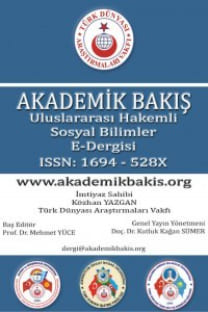AMPİR ÜSLÛBUNDA BİR SULTAN CAMİİ: NUSRETİYE
19. yüzyıl Osmanlı selâtin camilerinden olan Nusretiye Camii, Sultan II. Mahmud tarafından İstanbulun Tophane semtinde inşa ettirilmiştir. Caminin yerinde daha önce, Sultan III. Selim tarafından yaptırılmış Tophane-i Amire-i Arabacılar Kışlası Camii bulunuyorken, bu caminin 1823 yılında yanması üzerine yerine bugünkü cami inşa edilmiştir. Halk arasında Tophane Camii adıyla da tanınmış olan Nusretiye Camiinin inşaasına M. 1823de başlanmış 1826 yılında tamamlanmıştır. Caminin açılışından (8 Nisan 1826) bir süre sonra baş gösteren Yeniçeri Ayaklanması (15 Haziran 1826), Sultan II. Mahmud tarafından organize ve sert bir devlet müdahalesiyle bastırılmış; Hayırlı Olay anlamına gelen Vaka-i Hayriyye adıyla tarihe geçen bu müdahale sonrasında Yeniçeri Ocağı kaldırılmıştır. Bu tarihi olayı temsil etmesi amacıyla camiye (Kutsal) Zafer anlamına gelen Nusretiye ismi verilmiştir. Nusretiye Camii, Sultan II. Mahmud döneminde Osmanlıya giren, Fransa menşeli Ampir Üslûp (Empire Style) ögelerinin kullanıldığı ilk yapı olma özelliğine sahiptir. Makalemizde, Nusretiye Camiinin barındırdığı Ampir Üslûp elemanları belirlenmekle birlikte, yapının banisi olan Sultan II. Mahmudun devlet ideolojisi, sosyal-kültürel alanda gerçekleştirdiği reformlar, dönemin siyasi koşulları gibi faktörler ışığında, basit bir taklitçilikle damgalanan Osmanlı Batılılaşma/Modernleşme Dönemine ait olan söz konusu mimarideki bilinçli-seçmeci bir üslûbun (Ampir/İmparatorluk Üslûbu) varlığı vurgulanmaktadır. Bu çerçevede, bir mimari yaratımın sosyolojik olarak çözümlenmesi/tanımlanması şeklindeki bir sanat tarih yöntemine de dikkat çekilmektedir.
A SULTAN MOSQUE BELONGED TO EMPIRE STYLE: NUSRETİYE
Nusretiye Mosque, which is one of the Sultan Mosques of the 19th century, was built in Tophane district of Istanbul by Sultan Mahmud-II. While there was Mosque of Tophane-i Barracks Coachman which was built by Sultan Selim-III in its place before, on the burning of this mosque in 1823 current mosque was built instead. Nusretiye Mosque, which is also well-known as Tophane Mosque among people, was started to be built in 1823 and was completed in 1826. The Janissaries Revolt (15th July of 1826) which was cropped up after the opening of the Nusretiye Mosque (8 April of 1826) was suppressed with a state intervention, which was organized and harshed, by Sultan Mahmud-II. After this intervention, which went down in history as Vaka-i Hayriyye means Auspicious Incident, Guild of Janissary was abolished by Sultan Mahmud-II. The mosque was named as Nusretiye that means Holy Victory to symbolize this historical event. Nusretiye Mosque has the feature of being the first building which was decorated with the elements of French originated Empire Style that entered to the Ottoman architecture during the reign of Sultan Mahmud-II. In this article we identify the Empire Style elements of Nusretiye Mosque and on the other hand, contrary to the Orientalist opinion assert that the architecture of Ottoman Westernization/Modernization period were simple affected, we aimed to underline the presence of consciously-eclectic attitude in style of the mosque in the light of the ideology of the Sultan Mahmud-II as the owner the mosque, and reforms executed in social-cultural fields by him, and political circumstances of his monarchy.
